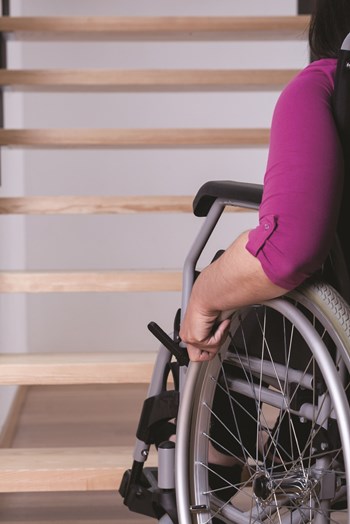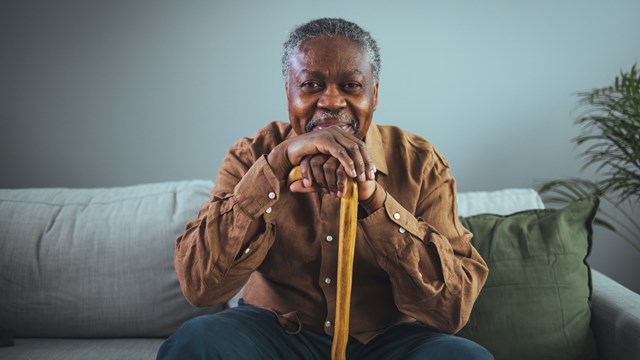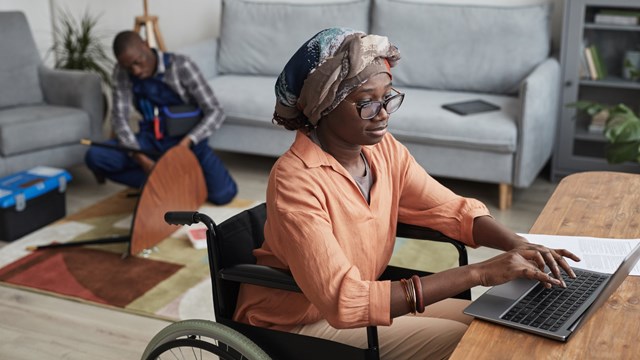
New England is home to more than three million seniors age 60 and older, and about one in four suffers some type of physical impairment. When you factor in a climate prone to blizzards and heavy snow storms, a disaster plan is an obvious necessity for all HOAs, condos, and multifamily dwellings across the region. Young and able-bodied individuals generally do not focus on safety or security until an event or occasion shows a need for concern, but those living with a mental or physical handicap or other health restrictions are aware of the challenges presented by everyday living and emergency situations. Young children and teenagers, another vulnerable part of a community, often live side by side with seniors. This group may also need special consideration during an emergency.
Most condominiums, multifamily buildings, and planned communities have policies and procedures in place for emergency evacuations and alerts, but a proactive plan to ensure everyone’s safety and security before disaster strikes isn’t static. Annual reviews, updates, and revisions will be required to keep everyone safe, healthy, and out of harm’s way. Boards, property managers, and residents themselves all have a role to play in developing a property’s specific disaster plan to serve everyone equally well.
Everyone Has a Part
The Red Cross, in its seminal pamphlet on the subject, Disaster Preparedness for People with Disabilities, states that “it is important for everyone to be prepared to meet his or her basic needs by storing food and water for a minimum of three days or more,” and goes on to say for those with disabilities, “You should also be ready to meet your specific disability related needs by storing sufficient oxygen, medications, battery power, etc., for at least seven days after a disaster.”
That advice on having an adequate supply of medications and such, should not only be heeded by the disabled, but also by the elderly, as many are on some form of medication—be it for something major or minor, it’s better to be prepared.
Jennifer Mieth of the Massachusetts Department of Fire Safety suggests having two ways out of a building you frequent, be it home or the office and a meeting place for everyone inside once they are out that way emergency workers will know if anyone is stuck inside. She also suggests planning around your abilities. “If you use hearing aids or glasses keep them bedside, along with your cell phone, so you can grab them on your way out. That’s what I mean about planning around your abilities,” says Mieth.
In case of a fire, Mieth also says, “We recommend that people sleep in the bedroom with the door shut as a closed door can protect you for a few minutes and buy you some time. Working smoke alarms should give you enough time to escape safely, but if there is smoke, fire, or whatever, you should stay in your room, close your door, call the fire department and hang a sheet or something out your window, so they’ll know where you are when they come to rescue you.”
In terms of emergency planning, the Red Cross also recommends creating a supply kit containing food, water, medication, electronic devices and anything else you might need to survive for a few days. They also suggest creating two kits, one for your home and the other for your car. They note that the kits do not need to be made all at once and that you can gather the provisions as you would normally come across them in your daily life, like getting the food and water for your kits when grocery shopping or medications when you see your doctor.
The Red Cross also suggests that you keep an emergency contact list and a medical list together. For the contact list they suggest listing someone who lives at least 100 miles away, so that they will be outside the disaster zone and easier to reach, while as far as the medical list goes, they say that you should list: the medications you are taking and their dosages, the reasons you are taking said medication, and contact information for the doctor who prescribed the medication. This would allow first responders and aid workers to better meet your needs. If you have a hard time communicating, keeping a series of note cards with important information on them in your disaster kit may be helpful.
Families with small children will also want to have a supply of diapers, formula, and personal health and comfort items in their emergency supplies.
Animals, be they pets or service animals, should also be taken into account. The Red Cross suggests having a supply of food and whatever medication they may need and note that in the event of a disaster, service animals may be unable to help, as they may be too shaken up or frightened.
It should be recognized that a severe storm may knock out power and water, but not require an evacuation.
While some may choose to leave until creature comforts can be restored, those who choose to remain will need adequate supplies of canned foods, water, and batteries. When a mandatory evacuation is called for, “hunkering down” at home is not an option.
Formulating a Disaster Plan
“The first thing is that associations should have some kind of disaster plan. That would mean that they would have emergency procedures in place. With that, they also have to be able to identify owners who have special needs. It’s a fine line because you can’t make people give you that information as an owner, but you should try and find a way to make sure you know who needs what help,” says Karla Kelley, vice president of client services at American Properties Team, Inc. in Woburn, Massachusetts.
Kelley adds, “From a management point of view we sometime ask people to fill out data forms, which are just basic information and we have people who don’t even want to fill those out. There’s a certain point where you can ask owners to please give us information, that even by law we’re supposed to have, but if they don’t want to give it to you they don’t give it to you.”
Managers, board members, and residents also need to be aware of the federal Health Insurance Portability and Accountability Act of 1996, generally known as the HIPAA law. HIPAA is designed to protect an individual’s confidentiality and healthcare information, and without personal authorization no information can or should be legally shared, even with the best of intentions.
When it comes to forming a disaster plan, “The board can hire a disaster company, who will come into an association and help them walk through all the steps that they need to have covered. It’s about: do you know your local, state and federal agencies that can help you; do you have a disaster relief company that you have a relationship with that can help you? In all areas there are disaster relief companies that help condos that they could reach out to,” Kelley says.
Going to the local fire department is also an option. They can help building form a plan, but according to Mieth, preparedness doesn’t stop there. “I would recommend having a fire drill. We’ve had a number of complexes where they have put together some really good systems where the management, tenants and fire department have worked together to establish a floor monitor so they know who is on what floor and if someone is missing or not. Fire departments are very frustrated when the alarm goes off and people don’t evacuate, so having working with the tenants and a floor monitor to make sure everyone is accounted for is very helpful.”
By having a floor monitor, first responders will know if someone needs rescuing or if anyone who made it out needs medical attention.
Karen Berard-Reed, senior project manager at the National Fire Protection Association (NFPA) in Quincy, Massachusetts, says, “They could hold fire drills, so people will know how to escape the building or if they can’t, where they can be until the fire department gets there. Taking care of snow and ice removal so people have a safe walking path and making sure sidewalks are in good repair.”
In terms of preventing disasters like fires, there are devices that can be installed that could potentially stop a fire before it gets out of hand.
“There are devices that can be installed that are helpful and I think HUD (Housing and Urban Development) is actually starting to require some of these when they refinance large properties, something called an in-hood fire extinguisher. Cooking is the leading cause of fires in the home, the leading cause of fire injuries; it’s the leading cause of fire injuries to people over 65. So these in-hood fire extinguishers attach to the hood by a magnet and should there be a fire they release their fire extinguishing agent. We’ve had a number of great successes here. This elderly couple went down to the fire station recently in Manchester and said ‘Oh thanks so much for giving it to us, it put the fire right out.’ The chief said, ‘Well why didn’t you call us?’ ‘There was no need, we just had to sweep up the baking soda.’ The chief then said, ‘Well, we’ll be right down to give you another just in-case.’,” says Mieth.
Identifying Community Resources
Governmental organizations, such as the Massachusetts Executive Office of Elder Affairs, and non-profits like the National Council on Aging will have links to, and information about, various programs that can be a big help to seniors. In addition, visiting nurses and Meals-on-Wheels can be a huge help.
The NFPA will often team with organizations that visit seniors, or have access to them, and will do fire and fall prevention seminars. It’s possible to set up a seminar for your building through nfpa.org.
Once a board has knowledge of which residents may need special services in the event of an emergency or evacuation, and which community resources match those needs, it is possible to formulate a list of assistance agencies and contact numbers.
The list should be given to all residents along with instructions to be followed in the case of a possible evacuation. This approach allows a board to provide for everyone by encouraging individual responsibility, utilizing community resources, and reducing association/board liability.
Anne Childers is a freelance writer and a frequent contributor to New England Condominium.






Comments
Leave a Comment